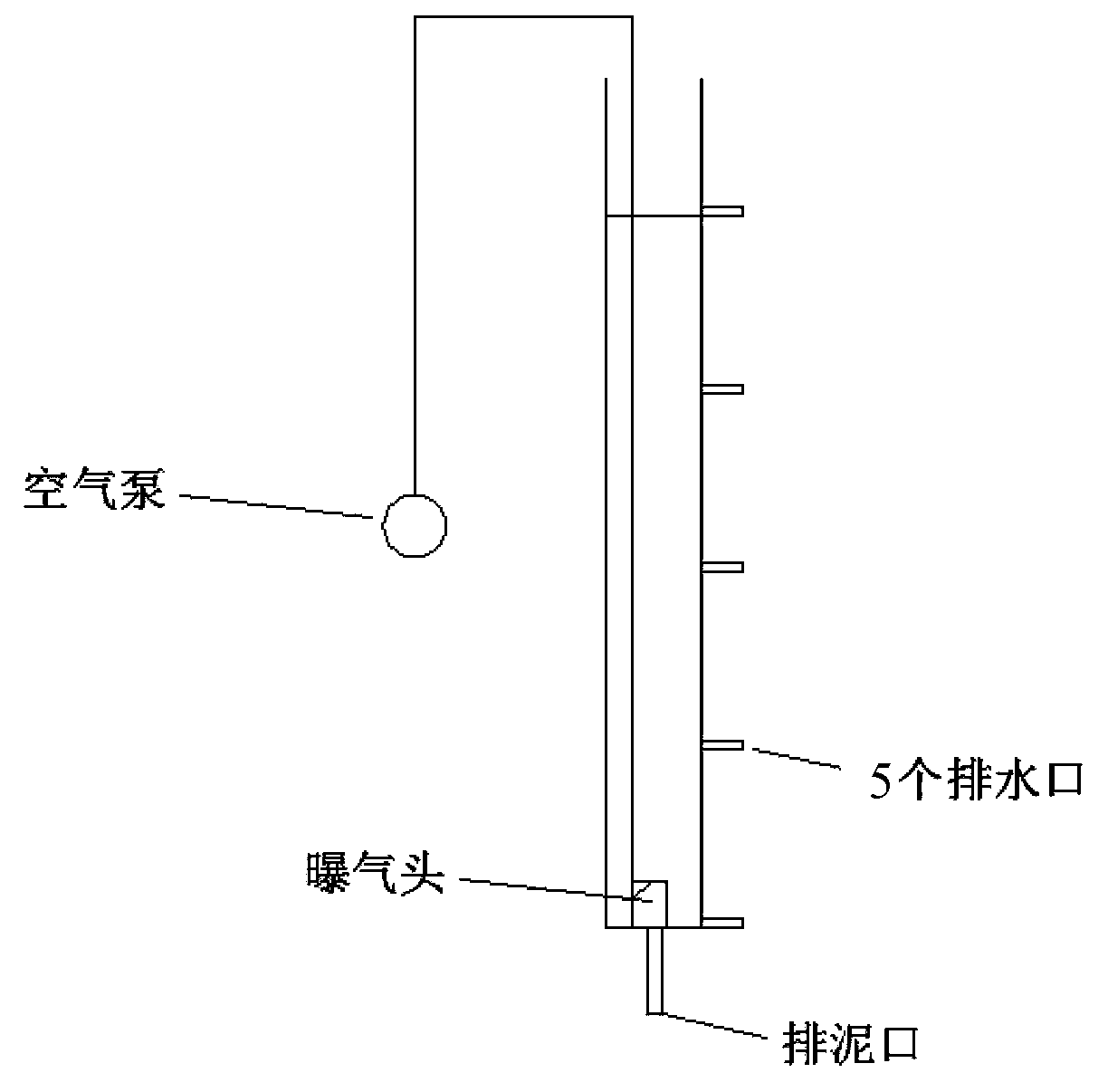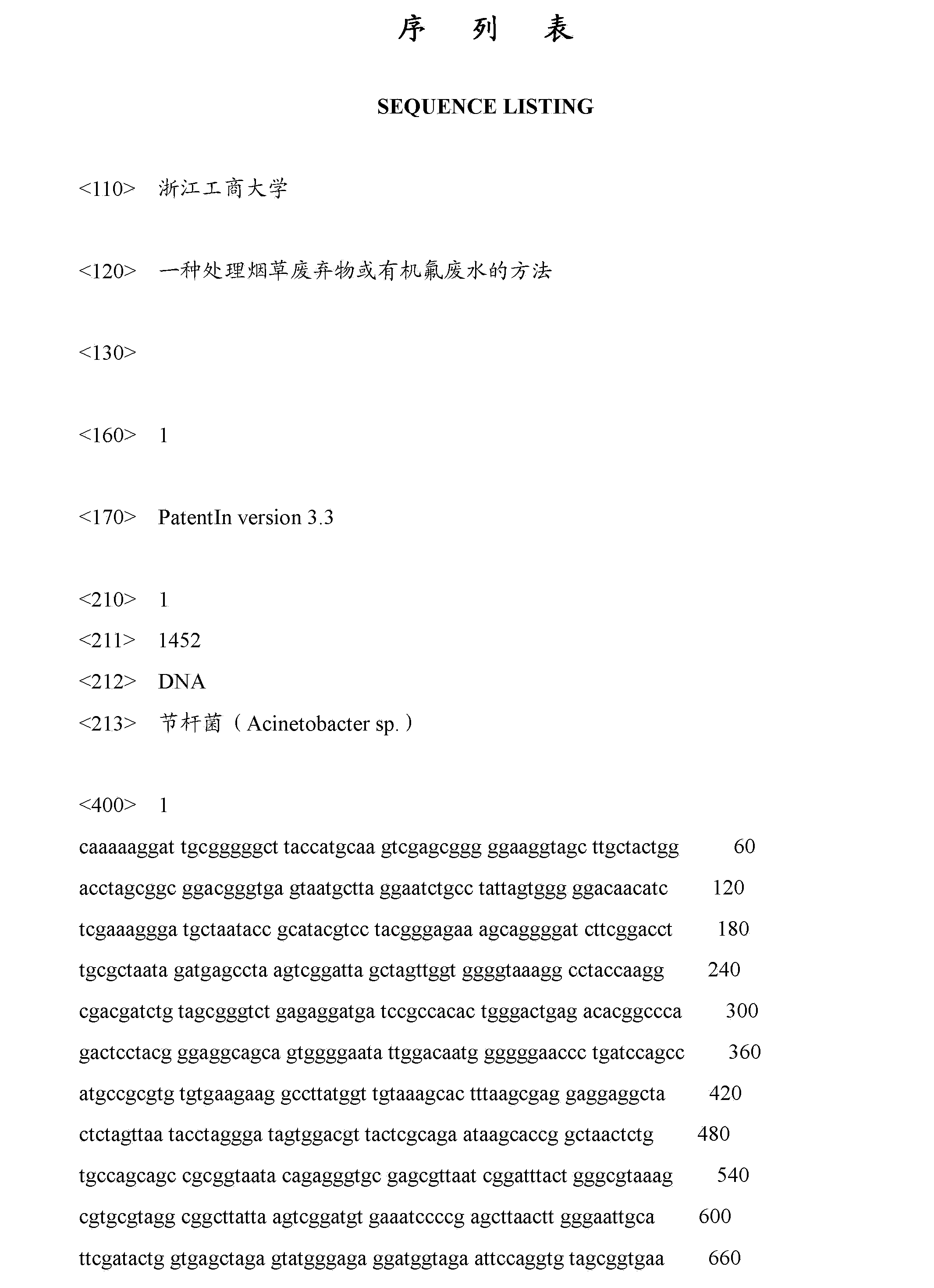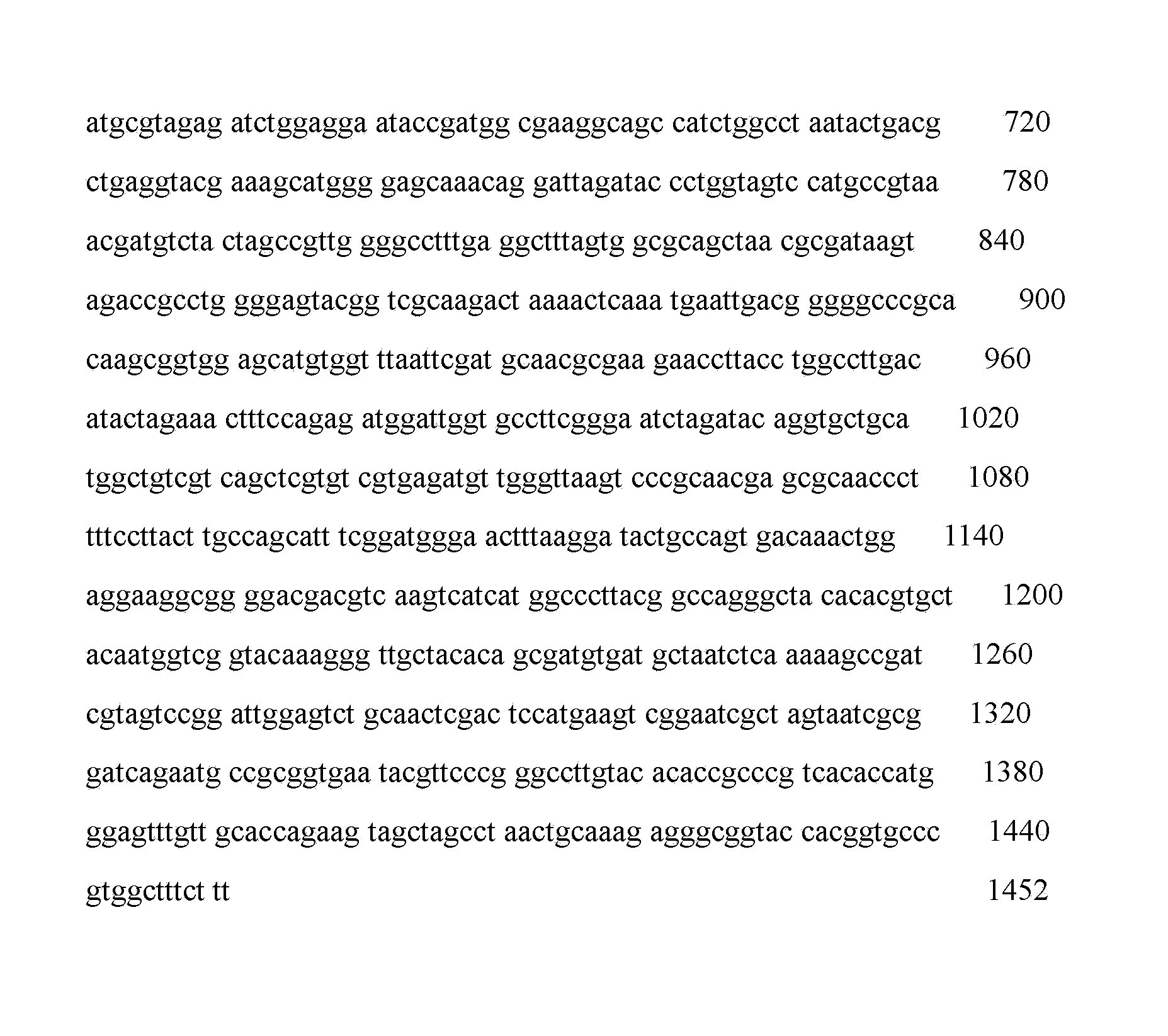Method for processing tobacco waste or organic fluorine wastewater
A tobacco waste and wastewater technology, applied in the field of applied microorganisms, can solve the problems of environmental and human impact, organic fluorine teratogenicity, difficult wastewater treatment, etc., to reduce costs and maintenance costs, reduce COD value, and less dosing times Effect
- Summary
- Abstract
- Description
- Claims
- Application Information
AI Technical Summary
Problems solved by technology
Method used
Image
Examples
Embodiment 1
[0037] Example 1 Treatment of Tobacco Waste Using Arthrobacter TW and Signal Molecule Preparations Facilitating its Colonization
[0038] (1) Screening and cultivation of Arthrobacter TW:
[0039] Tobacco waste from Hangzhou Liqun Cigarette Factory was taken and continuously cultured for 14 days to enrich nicotine-degrading bacteria; the enriched culture was diluted and inoculated on nicotine inorganic salt medium for culture; colonies were picked and continued to be diluted and cultured. until a single colony was picked.
[0040] After identification, the single colony was Arthrobacter sp. (Acinetobacter sp.), named Arthrobacter TW. Arthrobacter TW has been preserved. Deposit unit: General Microbiology Center of China Microbiological Culture Collection Management Committee, preservation date: October 2011, preservation number: CGMCC No.7.47. The strain is a Gram-negative bacterium with a size of (0.5-0.7×1.6-2.0 μm), and the colony of Arthrobacter TW is white and moist roun...
Embodiment 2
[0059] Example 2 Using Arthrobacter TW and signal molecule preparations conducive to its colonization to treat organic fluorine processing wastewater
[0060] (1) Culture of Arthrobacter TW:
[0061] The Arthrobacter TW obtained by screening in Example 1 is inoculated into the inorganic salt medium whose 4-fluoroaniline concentration is 1.0g / L, and the medium formula is: K 2 HPO 4 0.2g / L, KH 2 PO 4 0.8g / L, NaMoO 4 ·H 2 O 0.0033g / L, MgSO 4 0.2g / L, CaSO 4 2H 2 O 0.1g / L, FeSO 4 ·7H 2 O0.005g / L, 4-fluoroaniline 1g / L, pH8.0; cultivated in a shaker at 130rpm and 30°C for 32h.
[0062] (2) Preparation of signal molecule preparations that are beneficial to TW colonization: the signal molecule preparations are composed of N-3 oxo-hexanoyl-homoserine lactone (3-oxo-C 6 -HSL) and N-hexanoyl-homoserine lactone (C 6 -HSL), the concentrations of the mother liquors are 8mmol / L and 4mmol / L respectively, the mixing ratio of the two is 1:1, and the total volume is 10mL. The functio...
PUM
 Login to View More
Login to View More Abstract
Description
Claims
Application Information
 Login to View More
Login to View More - R&D
- Intellectual Property
- Life Sciences
- Materials
- Tech Scout
- Unparalleled Data Quality
- Higher Quality Content
- 60% Fewer Hallucinations
Browse by: Latest US Patents, China's latest patents, Technical Efficacy Thesaurus, Application Domain, Technology Topic, Popular Technical Reports.
© 2025 PatSnap. All rights reserved.Legal|Privacy policy|Modern Slavery Act Transparency Statement|Sitemap|About US| Contact US: help@patsnap.com



